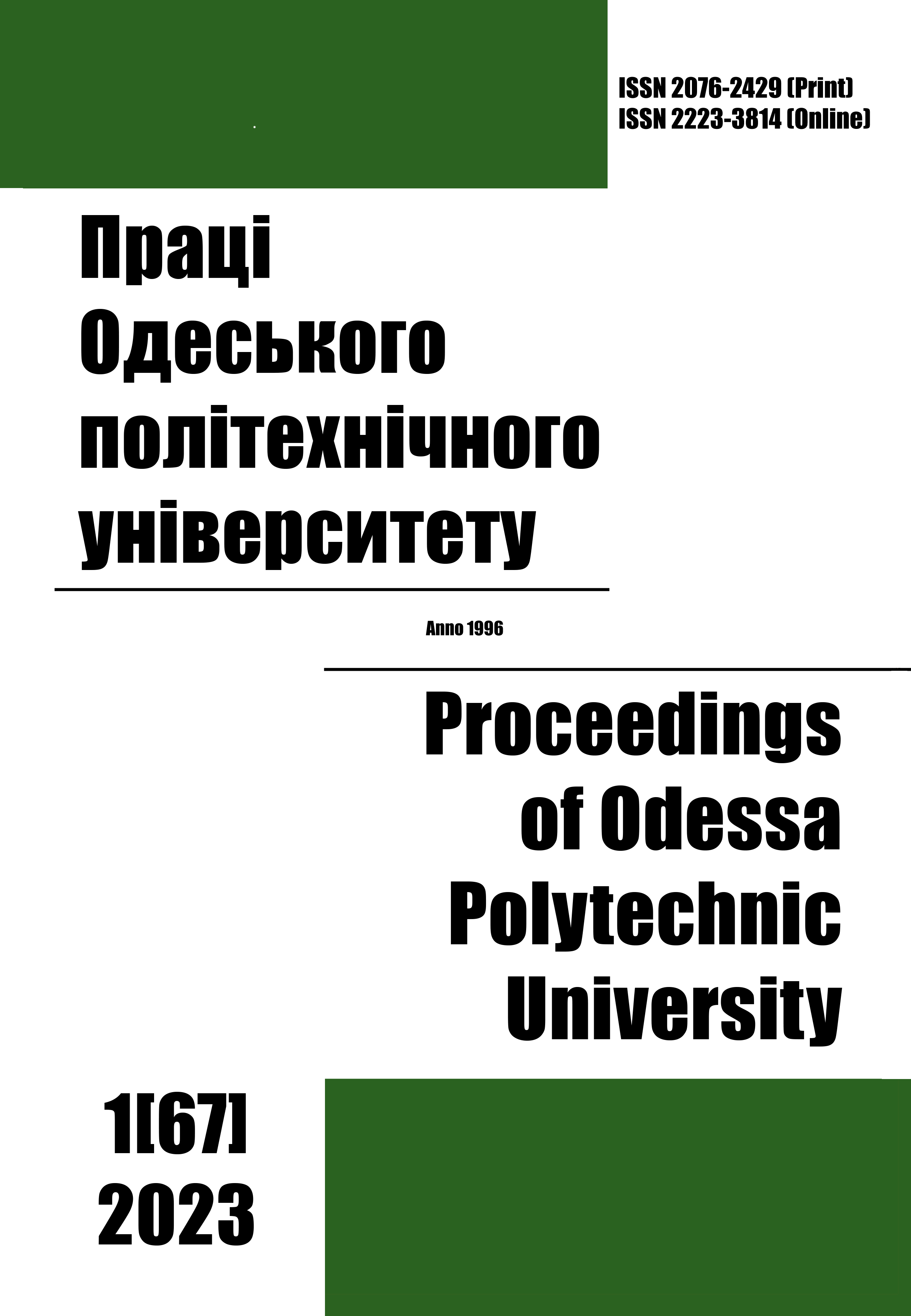Discrete mathematical structures in the analysis and synthesis of passive and active vibration isolating devices
DOI:
https://doi.org/10.15276/opu.1.67.2023.10Keywords:
mathematical structures, discrete structures, kinematic graph, modified kinematic graph, structure synthesisAbstract
The article deals with discrete mathematical structures used for the analysis and synthesis of passive and active vibration isolation devices. It is shown that approaches of discrete mathematics in the form of kinematic graphs and their further development in the form of modified kinematic graphs make it possible to effectively model the functional interaction between the elements of such devices, describing their interaction with the corresponding finite mathematical structures. Such an approach to solving the problems of synthesis of vibration isolating devices makes it possible to effectively carry out a complete enumeration of possible options and can be the basis for the transition to the design of their industrial samples. The paper presents an analysis of existing passive and active vibration isolating devices on the basis of which, as an example, a synthesis of a fundamentally new passive vibration isolating device with elements of active systems was carried out. The basis of the synthesis is a modified kinematic graph, which is the result of the intersection of the sets of elements of the modified kinematic graphs, respectively, of passive and active vibration isolation devices. It has been established that such a modified kinematic graph has two cycles with one pole and an arc that defines an elastic connection included in both cycles. It is shown that the resulting modified kinematic graph of the synthesized device is very quickly transformed into the corresponding block diagram and can be constructively implemented as a prototype of this device. It is substantiated that the device synthesized in the presented work, according to its structural features, occupies an intermediate place in the hierarchy of vibration isolation devices between passive and active ones.
Downloads
References
Pyatnytska-Pozdniakova, I.S. (2003). Basics of scientific research in higher education: Education manual. Kyiv: Center for educational literature.
Pavlenko, P.M. (2015). Fundamentals of mathematical modeling of systems and processes: study guide: for students. higher education institutions, for special “Information and measurement systems”. Kyiv: NAU.
Bardachev, Yu.M. (2012). Discrete mathematics. Kyiv: Higher school.
Kryviy, S. L. (2008). Discrete mathematics: selected questions. Kyiv: Kyiv-Mohyla Academy.
Nikitchenko, M.S., & Shkilniak, S.S. (2013). Applied logic. Kyiv: Kyiv University.
Nikitchenko, M.S., & Shkilniak, S.S. (2008). Mathematical logic and theory of algorithms. Kyiv: Kyiv University.
Trokhymchuk, R. M. (2010). Discrete mathematics. Kyiv: Personal.
Kotsegub, P.H., Tolochko, O.I., & Fedoryak, R.V. (2004). Synthesis of a digital controller of the state of a two-mass electromechanical object. Bulletin of the East Ukrainian National University named after V. Dalya, 2 (72), 111–119.
Katrenko, A.V. (2009). System analysis. Lviv: Novy svit-2000.
Susol, M.N., Onyshchenko, S.M., & Kovalenko, N.P. (2005). Application of the sixth algorithm of synthesis of stabilization systems to non-linear objects. Problems of informatization and management, 2(13), 73–77.
Mokin, B.I., Mokin, V.B., & Mokin, O.B. (2005). Mathematical methods of identification of electromechanical processes: training. Manual. Vinnytsia: Universum-Vinnytsia. ISBN 966-641-136-9.
Andreev, Yu.M., Druzhinin, E.I., & Mytyn, O.V. (2006). Kinematic and dynamic analysis of the cam mechanism of a molding machine. Bulletin of the National Technical University “Kharkiv Polytechnic Institute”, 21, 14–21.
Andreev, Yu.M., Laryn, A.A., & Lytvynov, O.I. (2011). Calculations of vibration isolation systems in a special system of computer algebra. Bulletin of SevNTU. Collection of scientific papers. Series: Mechanics, energy, ecology, 50–54.
Ambartsumyants, R.V. (2007). Graphs and mechanisms: monograph. Odesa: Polygraph.






